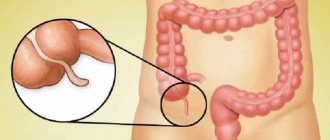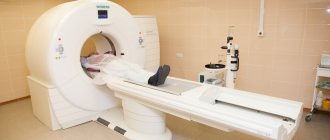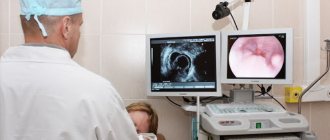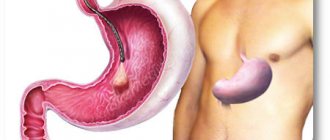With appendicitis, discomfort is localized in the lower right part of the abdominal cavity. But pain in the right side during physical activity is not the main sign of the disease. Most often this is a consequence of muscle spasm or neuralgia. If painful sensations are accompanied by a thickening of the abdomen, which is located below and to the right of the navel, an increase in body temperature, and vomiting, this is a sure sign of a serious intestinal disease. Doctors consider a chemical study of blood composition to be the main indicator of the general condition of the body. A blood test for appendicitis is the main indicator of the presence or absence of this disease.
Clinical picture of biochemical studies in inflammation of internal organs
The chemical composition of human blood is a constant value. They donate blood for analysis in order to find out the quantitative relationships of its components. If the levels of white and red blood cells are increased, the composition of the plasma has changed, then you need to start treatment without delay.
A mandatory laboratory test for the presence of leukocytes in the blood is prescribed if inflammation of the appendix is suspected. During acute inflammatory processes, the composition of human blood changes due to the ingress of bacterial metabolic products into it. Leukocytes with appendicitis increase in size and number.
Leukocytes in the body
They are the main tool of immunity, but at the first stage of inflammation this increase is imperceptible. The state of red blood cells also changes. Their number is not subject to strong fluctuations, but inflammation shortens the lifespan of the red blood cell.
Urine also changes its composition, which correlates with the type of disease. The amount of dead leukocytes and red blood cells in it increases, the alkaline reaction changes, and the most severe cases are accompanied by the appearance of protein. To determine appendicitis using a blood test, it must be taken early in the morning on an empty stomach.
A shift of leukocytes to the left confirms appendicitis
[A complete blood count] shows a noticeable increase in leukocytes, and confirmation is the same shift to the left - on the scale of the percentage of certain types of cells, an increase in band neutrophils is clearly visible. It is their growth that indicates serious inflammation. The phase of the process can be clarified by the appearance of a shift to the right - the balance shifts towards segmented leukocytes with a clear increase in their number and an increase in ESR.
READ Features of the course of chronic appendicitis
A leukogram for inflammation of the appendix plays the role of not only confirmation, but also an indicator of the urgency of surgical intervention. When moving to a shift to the right, the decision is made taking into account the lack of time, since the process develops rapidly and towards the phlegmonous and perforative stages. And this is a direct threat of the occurrence of a periappendiceal abscess with transition to peritonitis.
Differences between blood tests in adults and children
Blood tests for children are highly dependent on the individual condition of each child. The metabolic rate of a child's body is much higher than that of an adult. The leukocyte is actively involved in metabolism. Their amount in the blood of children significantly exceeds the proportions for older people.
Analysis indicators
The correct indicators for a mature person in relative values of leukocytes are from 4 to 8 units. In children they can reach 17. During pregnancy – 12-18. If leukocytes exceed 20, then there is a suspicion of peritonitis - a severe form of appendicitis that requires urgent surgical intervention. The decision about the severity of the disease should be made by specialized specialists - a pediatrician and a gastroenterologist. Since in acute peritonitis the patient’s death is likely due to blood poisoning, it is important not to miss the moment.
Signs of appendicitis
Other signs of appendicitis:
- Physiological signs. An increase in temperature, painful lumps in the lower abdomen, vomiting, and loose stools are the first external signs. If the disease has progressed, bloody discharge may appear in the stool and urine. In particularly difficult cases, a fistula develops with access to the skin.
- Changes in the composition of urine. The vital activity of pathogenic microorganisms is reflected in all body secretions. The kidneys separate metabolic products, signaling the onset of the disease by the changed chemical composition of the filtrate. If proteins appear in the general urine analysis, the bacterial background is increased, and its color takes on an unhealthy, cloudy appearance, this is a sure sign of internal inflammation.
- ESR. An ESR (erythrocyte sedimentation rate) analysis is designed to show what stage the disease is at. The activity of red blood cells varies depending on the state of the body. The inflammatory process provokes red blood cells to increase the consumption of their resources. ESR shows how long these cells live. Expressed in the height of the plasma layer and measured in millimeters per unit of time. In a healthy man it is 1-10 millimeters per hour, in a woman 3-15, in a child 12-17, in a newborn 0-2.
- However, only the results of a comprehensive examination, taking into account the total number of leukocytes and erythrocytes, will help to draw a conclusion about the nature of the disease.
Diagnostic features
For appendicitis, material is taken for analysis from a finger or, in some cases, from a vein. The procedure is painless. Leukocytes in appendicitis are above 18. This condition is quite understandable, because leukocytes in the human body are responsible for protection; if an infection or inflammation develops in the body, then these cells are the first to rush into battle, protecting the person from the consequences of the disease.
A study of the blood composition shows an increase in leukocytes in the catarrhal stage of inflammation to 9-12 thousand, and in the phlegmonous form to 17. If the figure is above 20 thousand, then an abscess or peritonitis is possible. When taking the test, take into account the individual characteristics of the human body, for example, during pregnancy, the level of leukocytes in the blood is normally always elevated, and this is not a deviation.
If you are wondering how to determine appendicitis yourself, pay attention to the characteristic signs; they are also a good reason to conduct a laboratory analysis. In case of inflamed appendicitis, a study in young children, men and women will show an increased content of leukocytes, and the patient himself will suffer from nausea, vomiting, severe abdominal pain, lethargy, and pale skin. Pain during appendicitis is localized above the navel and radiates to the solar plexus. The patient develops a fever and becomes febrile.
An increase in intoxication of the body leads to stool disorders, constipation or diarrhea. The insidiousness of appendicitis is that the pain syndrome is easily relieved with painkillers, although degenerative changes continue to develop, becoming more intense every hour. If surgical procedures to remove the caecum are not started in a timely manner, it will rupture and infection will occur.
Table: distinctive features of appendicitis in children of different age groups
| History and symptoms | Children under three years old | Children over three years old |
| Onset of the disease | Sudden onset, symptoms of intoxication are immediately evident. Lethargy, appetite and sleep disturbances. | Gradual onset, the process begins with the appearance of a pain symptom. |
| Nature of pain | Most often localized in the navel area. If the child cannot point to the source of pain, this is discovered by accidentally touching or shifting the baby. | Initially, the source of pain is located in the stomach or navel. Then the pain moves to the right iliac region. |
| Vomit | Several times, up to 5–6, it is associated with intoxication of the body. | Most often, one-time, reflexively associated with a reaction to pain. |
| Temperature | Just above 37.5 degrees. An increase in heart rate that does not correspond to the rise in temperature is typical. | As a rule, it does not exceed 37.5. The pulse rate corresponds to the increase in body temperature. |
| Chair | Diarrhea. | Constipation. |
Symptoms of abdominal wall tension and pain on palpation of the right iliac region are expressed equally in all age groups. When palpating painful areas, the child reacts violently by crying and pushing away the doctor’s hand.
Diagnosis of appendicitis in children includes listening to intestinal motility
Chronic appendicitis in children most often resembles attacks of intestinal colic . The difference from this disease is that attacks of non-localized pain can be accompanied by short-term increases in temperature, upset stool and single vomiting. Such symptoms should alert parents. An accurate diagnosis can be made after a thorough laboratory examination.
Initial examination
The first diagnostic method is an initial examination with palpation of the abdominal area. If the blood supply to the appendix is disrupted, strong, sharp pain is observed when pressing on the iliac region on the right side. In some clinical cases, the doctor may feel the inflamed appendix. The basic rule of palpation is to sharply release the hands after pressing on the abdomen. A description of associated symptomatic signs is an important part of the purpose of additional studies.
Submitting biological material for laboratory testing is important to determine further treatment for appendicitis. The exception is clinical cases when there is a serious complication that requires immediate surgical intervention to avoid the death of the patient. Based on the results of laboratory tests of blood and urine, it is possible to determine the cause of inflammation and eliminate possible problems with urination.
Biological material is collected to carry out the necessary tests:
- general blood and urine analysis if appendicitis is suspected;
- measuring the level of red blood cells, leukocytes;
- establishing the reactive protein indicator;
- determination of hCG level.
Establishing the number of leukocytes and erythrocytes contained in the blood allows us to identify the internal inflammatory process. Urine examination makes it possible to exclude diseases of the urinary system and determine the presence of pathogenic bacteria, infections, and viruses.
Diagnostic procedures to identify acute appendicitis help assess the patient's condition. A blood test shows not only the inflammatory reaction of the appendix, but also other pathological processes in the body. To clarify the diagnosis, additional examination methods are prescribed. If the disease is not diagnosed on time, the following complications develop:
- abdominal abscess;
- complex form of pylephlebitis;
- peritonitis;
- appendicular infiltrate;
- intestinal obstruction.
No one is immune from the sudden development of the disease. Therefore, it is very important to know what tests to take to determine appendicitis. This will save time when making a diagnosis. Failure to do so could result in death.
The first symptomatic signs of an inflamed appendix are:
The initial period of appendicitis
Children are more susceptible to changes in blood composition. This makes it difficult to diagnose appendicitis in a timely manner. A child's blood contains a much larger number of leukocytes. Because of this, in children the disease at an early stage is easy to miss. It is accompanied by a relatively unnoticeable change in laboratory test results or is not diagnosed at all.
Pain syndrome is attributed to physical activity, general malaise to a cold, digestive problems to stress, and so on. If these signs are present, it is necessary to submit samples of discharge for testing for general composition. Sampling should only be done in the absence of stimuli. A comprehensive blood and urine test is designed to help identify the disease at this stage.
Leukocytosis in complications of appendicitis
With catarrhal appendicitis and initial destructive changes, leukocytosis is most often moderate, within 12-14 x10
9
/l. If during this period there is no adequate treatment of the disease, that is, surgery, then in most cases complications develop.
The most common of these is perforation of the organ and release of purulent mass into the abdominal cavity. Perforation with subsequent development of peritonitis can also be determined by the clinical picture of the disease and according to instrumental examinations.
- Peritonitis is characterized by pain throughout the abdomen, noticeable bloating, lack of stool, and general symptoms of intoxication. As this complication develops, the pulse becomes thread-like and frequent, and can reach up to 140 beats per minute. If you do a blood test at this time, it will reveal pronounced leukocytosis, increased compared to the norm of ESR. If leukopenia is detected, that is, a decrease in the number of leukocytes in the peripheral blood, then this indicates a severe pathology.
- Moderate leukocytosis can also occur in humans with the development of appendiceal infiltrate. This term refers to a condition in which inflammation from the appendix spreads to the intestinal organs and a welded conglomerate is formed. In addition to an increase in the number of leukocytes, this complication reveals a shift in neutrophils. A patient with appendiceal infiltrate is treated in the first weeks without surgery; he is prescribed antibacterial therapy, under the influence of which the inflammation is relieved and blood tests return to normal.
- Appendiceal abscesses develop 8-12 days from the onset of the disease. Ulcers can be located anywhere in the abdominal cavity. This complication can be suspected by a deterioration in the patient’s general well-being, an increase in temperature, chills, and an increase in pulse. Leukocytosis increases in the blood, and a shift to the left of the leukocyte formula is determined.
- Pylephlebitis is one of the most serious complications of appendicitis. This term refers to purulent thrombophlebitis of the portal vein of the liver. The general condition of the patient is very serious, the most constant symptom is stunning chills, rapid pulse and temperature up to 40 degrees. There is high leukocytosis and ESR in the blood.
When making a diagnosis of appendicitis and identifying its complications, all blood parameters are taken into account, they are carried out repeatedly throughout the day, identifying all changes. The decision to choose a treatment method is made taking into account the patient’s condition.
Can appendicitis hurt for several days?
In case of complications, the outcome of treatment largely depends on the patient’s age, time of admission to the hospital, and concomitant pathologies. With appendicitis, even now, deaths often occur, and they often occur due to the patient’s late presentation to a medical facility.
Beginning of the acute phase of inflammation
The cecum performs the function of storing enzymes necessary for digestion and immune function. It is isolated from the intestines, and this causes suppuration when the immune system is weakened.
Diagnosis based on a high white blood cell count clearly indicates inflammation. This condition is called leukocytosis. It is necessary to determine whether an acute inflammatory process has begun in cases of suspected appendicitis as quickly as possible! This disease is dangerous with complications. Prompt treatment with modern antibiotics and close clinical supervision can completely stop the disease at this stage. Strict adherence to the recommendations guarantees complete recovery, and failure to comply will lead the disease to the chronic stage.
Pathological stage
The transition to this stage will show that the permissible level of leukocytes is many times exceeded (2 times or more). The beginning of tissue breakdown threatens general blood poisoning. The accumulating liquid containing the remains of dead leukocytes in the form of suppuration becomes a source of intoxication. It can cause severe anaphylactic shock and coma. The proximity of the appendix to the lymph nodes is particularly dangerous. Only urgent surgery will save a patient with this form of the disease. Drug treatment cannot help in this case. People often die from medical errors when treating peritonitis.
Prevention of appendicitis
At a time when human internal organs remained poorly understood, doctors were not able to localize inflammation. Dissection of corpses was prohibited by medieval religion.
Historical steps
Diseases of the cecum were studied by ancient scientists. Hippocrates wrote about severe intestinal suppuration, but did not know its causes. Cases of cure were rare. The cause of appendicitis was discovered only in the 16th century. The treatment methods offered were wild by modern standards. For example, doctors advised swallowing small lead balls to clear the cecal valve. Until the beginning of the 20th century, the causative agents of appendicitis were considered to be foreign bodies that had no way out of it, since there is no through passage through the cecum. Popular superstitions still contain advice on prohibiting the consumption of small, difficult-to-digest foods, for example, sunflower cake. In the 20th century, medicine achieved great development and refuted such misconceptions.











